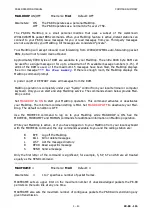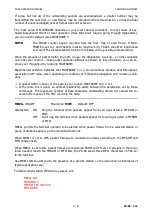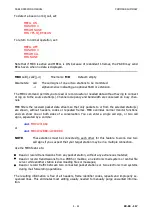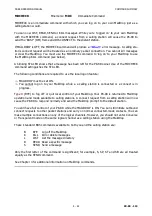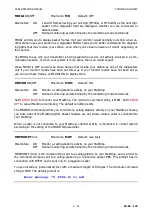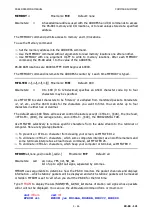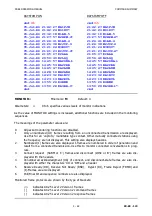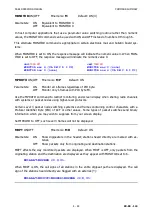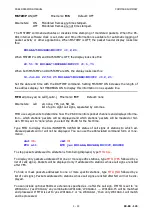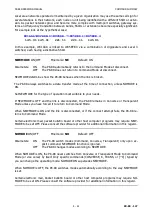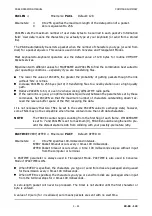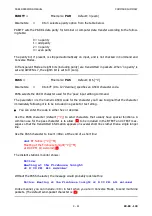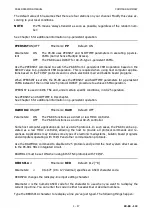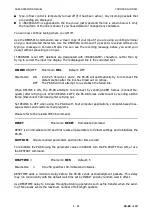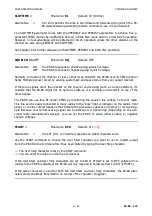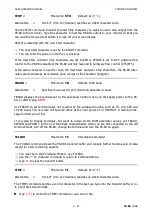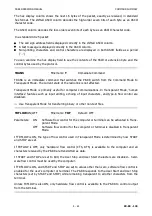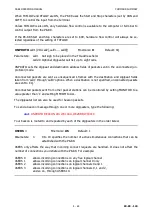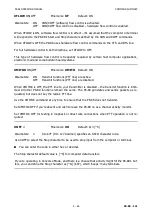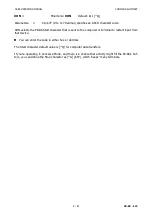
PK-88 OPERATING MANUAL
COMMAND SUMMARY
5 - 53
PK-88 - 128
NUCR
ON|OFF
Mnemonic:
NU
Default: OFF
Parameters:
ON
<NULL> characters are sent to the terminal following <CR> characters.
OFF
<NULL> characters are not sent to the terminal following <CR> characters.
Some of the older electromechanical terminals (Teletype™ machines) and printer terminals require
some extra time for the printing head to do a line feed and return to the left margin. NUCR ON sol-
ves this problem by making the PK-88 send <NULL> characters (ASCII code $00) to your com-
puter or terminal. This introduces any necessary delay after any <CR> sent to the terminal.
The NULLS command sets the number of individual <NULL> characters that are to be sent when
NUCR is ON.
⇒
Set NUCR ON if your terminal or printer misses one or more characters after responding to a
<CR>. If this is the case, you will sometimes see overtyped lines.
NULF
ON|OFF
Mnemonic:
NUL
Default: OFF
Parameters:
ON
<NULL> characters are sent to the terminal following <LF> characters.
OFF
<NULL> characters are not sent to the terminal following <LF> characters.
Some of the older electromechanical terminals (Teletype™ machines) and printer terminals require
some extra time for the printing head to do a line feed and return to the left margin. NULF ON sol-
ves this problem my making the PK-88 send <NULL> characters (ASCII code $00) to your com-
puter or terminal. This introduces any necessary delay after any <LF> sent to the terminal.
The NULLS command sets the number of individual <NULL> characters that are to be sent when
NULF is ON.
⇒
Set NULF ON if your terminal or printer misses one or more characters at the beginning of a
new line after responding to a <LF>.
NULLS
n
Mnemonic: NULL
Default: 0 (zero)
Parameters:
n
0 to 30 specifies the number of <NULL> characters to be sent to your com-
puter or terminal after <CR> or <LF> when NUCR or NULF are set ON.
NULLS specifies the number of <NULL> characters (ASCII code $00) to be sent to the terminal
after a <CR> or <LF> is sent.
⇒
NUCR and/or NULF must be set to indicate whether nulls are to be sent after <CR>, <LF> or
both.
Devices requiring nulls after <CR> are typically hard-copy devices requiring time for carriage
movement. This applies to most of the older electromechanical teleprinters and computer printers.
Devices requiring nulls after <LF> are usually slow-scrolling CRT.
The null characters are sent from the PK-88 to your computer only in Converse and Command
Modes.


